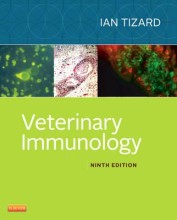Diet evaluation
9 important questions on Diet evaluation
Principle of measuring digestibility
- most simple way to determine -> quantifying dietary intake and faeces production and analyse the nutrients of interest in a representative sample of diet and feaces
- the results are expressed as apparent faecal digestibility coefficient
- ADC = Nutrient intake – nutrient output x 100 / Nutrient intake
The ratio of marker to nutrient in the diet and in faeces is used to estimate the nutrient digestibility using the formula:
In which:
DCnutrient = digestibility of nutrient [M]diet = concentration of marker in diet [M]faeces = concentration of marker in faeces
[N]diet = concentration of nutrient in diet [N]faeces = concentration of nutrient in faeces
In fish faeces can be collected by various techniques that can be classified as follows
- Methods that collect (separate) the faeces from the water
- Methods that collect faeces directly from the GIT (stripping, suction or sacrificing) Stripping could lead to contamination of the digesta
- Higher grades + faster learning
- Never study anything twice
- 100% sure, 100% understanding
Measuring digestibility in various sections of the tract
- digestion in the forestomach determines intestinal protein supply
Validity of digestibility coefficients
- this is why for the digestibility of other nutrients faecal digestibility is used
- in poulty faeces and urine are excreted together making determining digestibility difficult
- solutions include colostromy or the ileal sampling (slaughter technique)
Endogenous protein secretion can be estimated to calculate the true digestibility
- Determine N secretion by feeding animals graded levels of protein
- using labelled protein
In situ/in sacco methods
- from the decline in residue dry matter with time the rate of degradation of the diet components can be estimated
Methods have been developed to measure the in vivo digestibility in laboratories
- Tilly and Terry: estimates the apparent organic matter digestibility in ruminants
- enzymes: digestion is stimulated by the activity of hydrolytic enzymes to obtain information on protein digestibility in monogastrics
- physical methods: predicting chemical composition and digestibility by physical measurements like Near Infrared Spectroscopy
- cumulative gas production method: used to obtain insight in rumen fermentation of different feedstuffs
Protein supply to the small intestine can be estimated as
- microbial protein synthesis in the rumen: Can be estimated from the ratio between the duodenal flow of a microbial marker and the concentration of that marker in isolated bacteria
- intestinal digestion of dietary and microbial protein: protein evaluation systems assume a constant apparent absorption regardless of the protein origin
The question on the page originate from the summary of the following study material:
- A unique study and practice tool
- Never study anything twice again
- Get the grades you hope for
- 100% sure, 100% understanding





























